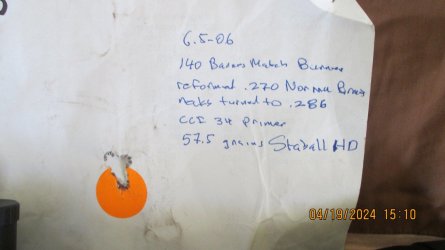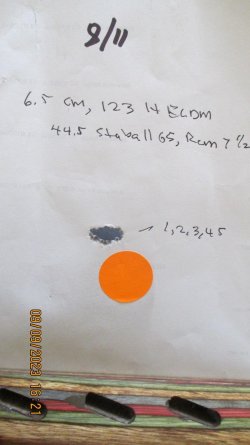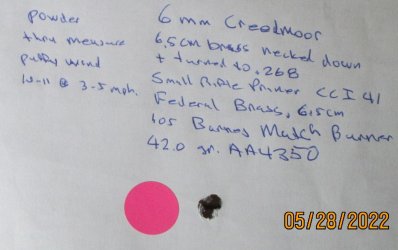Hugnot
Well-Known Member
For many medium size cartridges magnum primers are not required. As shown in table 1 the little Rem 7 1/2 is a relatively powerful primer developing 2303 k Pa. The CCI 41 primer is intended for 5.56 ammo that is loaded for military use with all sorts of different powders used in a wide variety of conditions. Medium size cartridges would include the .22CM, 6CM, 6.5CM, 243W & .260 Rem. All of these are available for small primer use. The CCI 34 is intended for 7.62 ammo, all sorts of different powders & conditions,. I use them in my .300WM with VN 165 powder and the tail end of my dwindling stocks of 4000MR, over 70 grains with 178 grain bullets.
Here are some groups shot with a variety of primers/cartridges:



The CCI 34 primer has been periodically available at one of my LGS, Scheel's, and when they appear I buy a thou, then after 1 week if they are still available I buy another thou. I use CCI 41 exclusively in my AR and have found them to be good primers in the 6CM & 6.5 CM. When using ball powders, like Staball 6.5 I use the more powerful pressure (2303 kPa) Rem 7 1/2.
Here are some groups shot with a variety of primers/cartridges:



The CCI 34 primer has been periodically available at one of my LGS, Scheel's, and when they appear I buy a thou, then after 1 week if they are still available I buy another thou. I use CCI 41 exclusively in my AR and have found them to be good primers in the 6CM & 6.5 CM. When using ball powders, like Staball 6.5 I use the more powerful pressure (2303 kPa) Rem 7 1/2.
Last edited:
